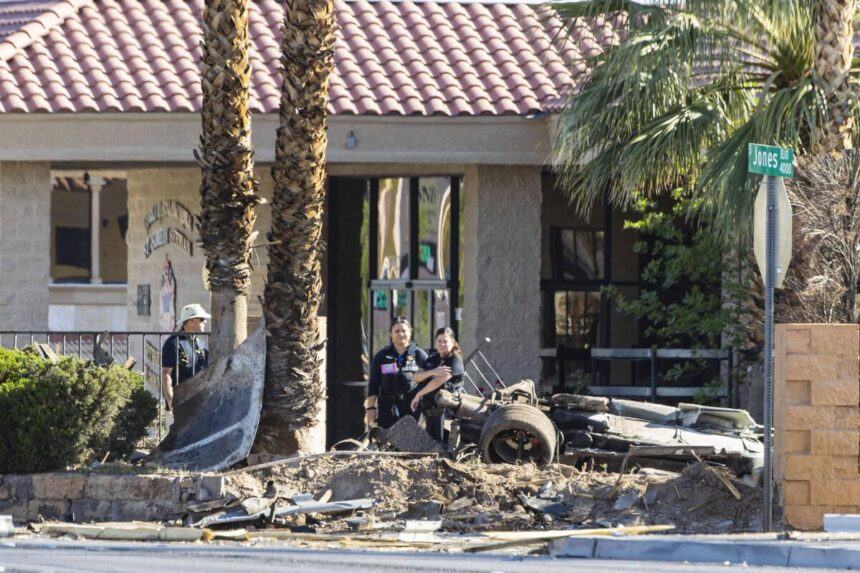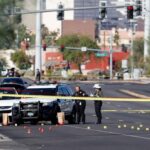Spring Valley Intersection: Las Vegas’ Most Risky Traffic Hotspot
Overview of the High-Risk Spring Valley Junction
Situated at the crossroads of Spring Mountain Road and Jones Boulevard, the Spring Valley intersection has emerged as the leading site for traffic accidents in Las Vegas over the past year. This busy urban junction experiences a significant volume of daily commuters, which, combined with suboptimal traffic signal coordination and limited pedestrian visibility, has contributed to a surge in collisions. Emergency responders report that rear-end crashes and T-bone collisions dominate the incident types at this location.
City planners and traffic safety experts are actively exploring a range of interventions designed to improve safety and streamline traffic flow. Proposed enhancements include:
- Optimizing traffic signal cycles to better match peak travel times and reduce congestion
- Adding more conspicuous warning signage to alert motorists of upcoming road conditions
- Boosting pedestrian crosswalk visibility through upgraded lighting and reflective pavement markers
| Type of Collision | Proportion of Total Crashes |
|---|---|
| Rear-End Collisions | 45% |
| Side-Impact (T-Bone) Crashes | 35% |
| Pedestrian-Related Incidents | 15% |
| Other Types | 5% |
Identifying the Root Causes Behind Frequent Accidents
Thorough investigations have pinpointed several key contributors to the elevated accident rate at this intersection. Chief among these are insufficient street lighting that hampers nighttime visibility and complex, confusing traffic signal patterns that often bewilder drivers unfamiliar with the area. The intersection’s design also features multiple pedestrian crossings without safe waiting zones, increasing the likelihood of vehicle-pedestrian conflicts.
- Heavy left-turn traffic during rush hours leads to congestion and driver frustration
- Inadequate signage causes abrupt lane changes and unsafe maneuvers
- Close proximity to several commercial driveways results in unpredictable vehicle entries and exits
| Contributing Factor | Associated Impact |
|---|---|
| Poor Lighting Conditions | 41% increase in accident likelihood |
| Confusing Signal Patterns | 28% of crashes linked |
| High Volume of Left Turns | 35% of multi-vehicle collisions |
| Pedestrian Crossings Without Refuge | 15% pedestrian-related crashes |
Strategic Safety Enhancements Proposed by Authorities
In light of the concerning accident statistics, municipal officials and traffic engineers have outlined a series of targeted safety upgrades. These include the deployment of advanced traffic signal technology featuring extended yellow light durations to reduce abrupt stops, pedestrian crosswalks equipped with countdown timers for safer crossings, and improved street illumination to enhance visibility during nighttime hours. Additionally, law enforcement plans to increase patrols during peak traffic periods to enforce compliance with traffic regulations.
Further infrastructure and awareness initiatives under consideration are:
- Resurfacing roads with skid-resistant materials to improve vehicle traction and control
- Installing larger, reflective traffic signs to provide earlier warnings to drivers
- Creating dedicated turn lanes to separate turning vehicles and reduce traffic conflicts
| Safety Measure | Expected Reduction in Incidents |
|---|---|
| Extended Yellow Signal Timing | 15% decrease in rear-end collisions |
| Upgraded Pedestrian Crosswalks | 20% reduction in pedestrian accidents |
| Enhanced Nighttime Lighting | 10% fewer crashes after dark |
Community Engagement and Advocacy for Safer Roads
Local community leaders and safety advocates are urging swift action to address the dangers at the Spring Valley intersection. Their recommendations emphasize immediate improvements such as recalibrating traffic signals, boosting street lighting, and installing more prominent pedestrian crosswalks to safeguard both drivers and walkers. These infrastructure upgrades are seen as vital steps toward reducing the high accident rates.
Beyond physical changes, community groups are launching educational campaigns to promote safer driving habits. Key components of these efforts include:
- Organizing interactive safety workshops and public forums
- Distributing educational materials focused on accident prevention strategies
- Collaborating with local schools to instill safe driving principles in young motorists
- Implementing social media campaigns targeting distracted driving awareness
| Community-Driven Initiative | Anticipated Safety Benefit |
|---|---|
| Coordinated Traffic Signal Improvements | 25% reduction in rear-end crashes |
| Enhanced Pedestrian Safety Measures | 30% fewer pedestrian injuries |
| Upgraded Street Lighting | 20% decrease in nighttime collisions |
Conclusion: Moving Toward Safer Travel at Spring Valley
As the Spring Valley intersection remains the most accident-prone location in Las Vegas, a collaborative approach involving city officials, traffic engineers, and community advocates is crucial to reversing this trend. With traffic volumes continuing to rise and road conditions evolving, prioritizing infrastructure upgrades and public education will be key to enhancing safety. Ongoing monitoring and active community participation will play essential roles in reducing crash rates and ensuring safer journeys for all residents and visitors.








